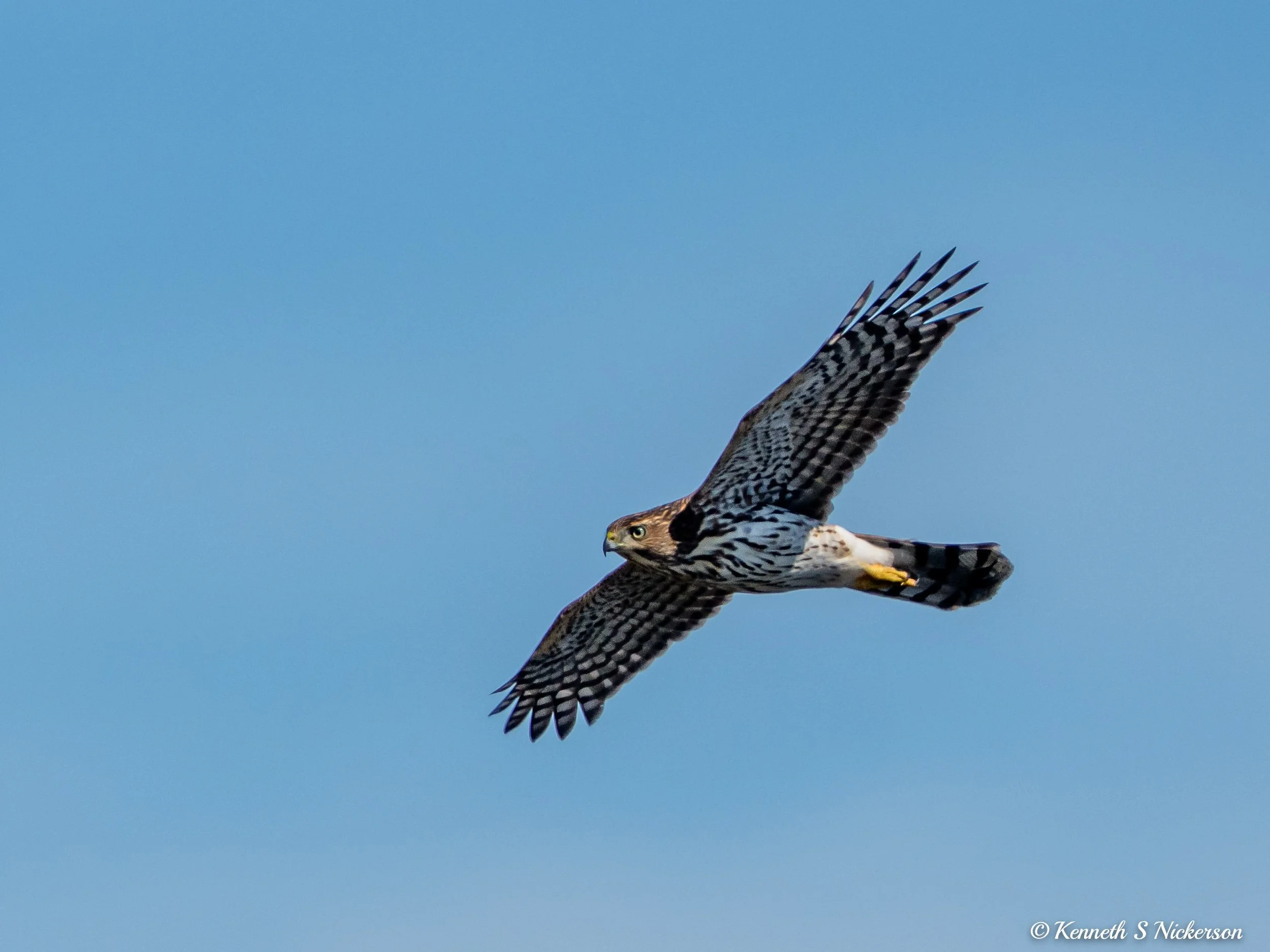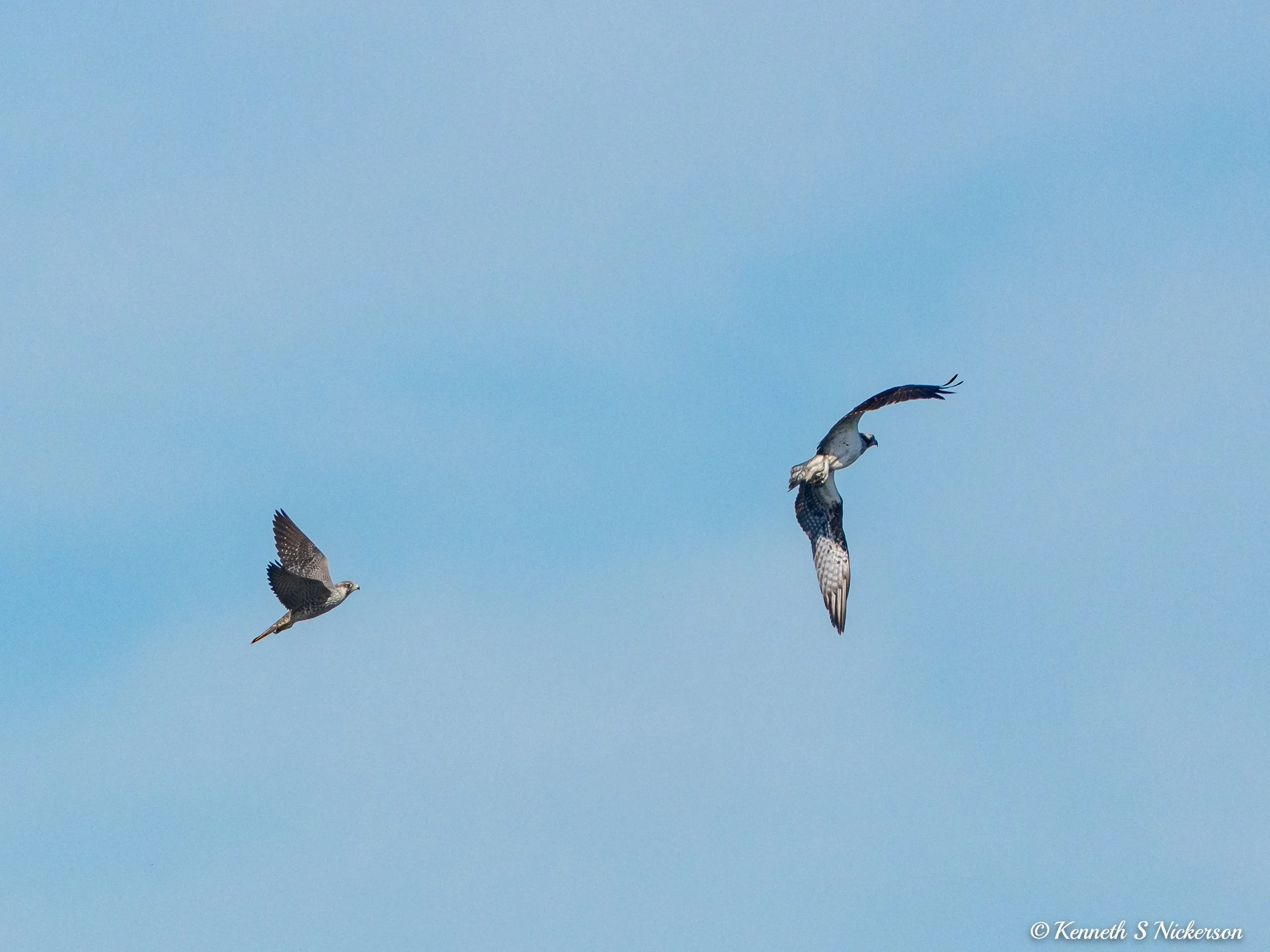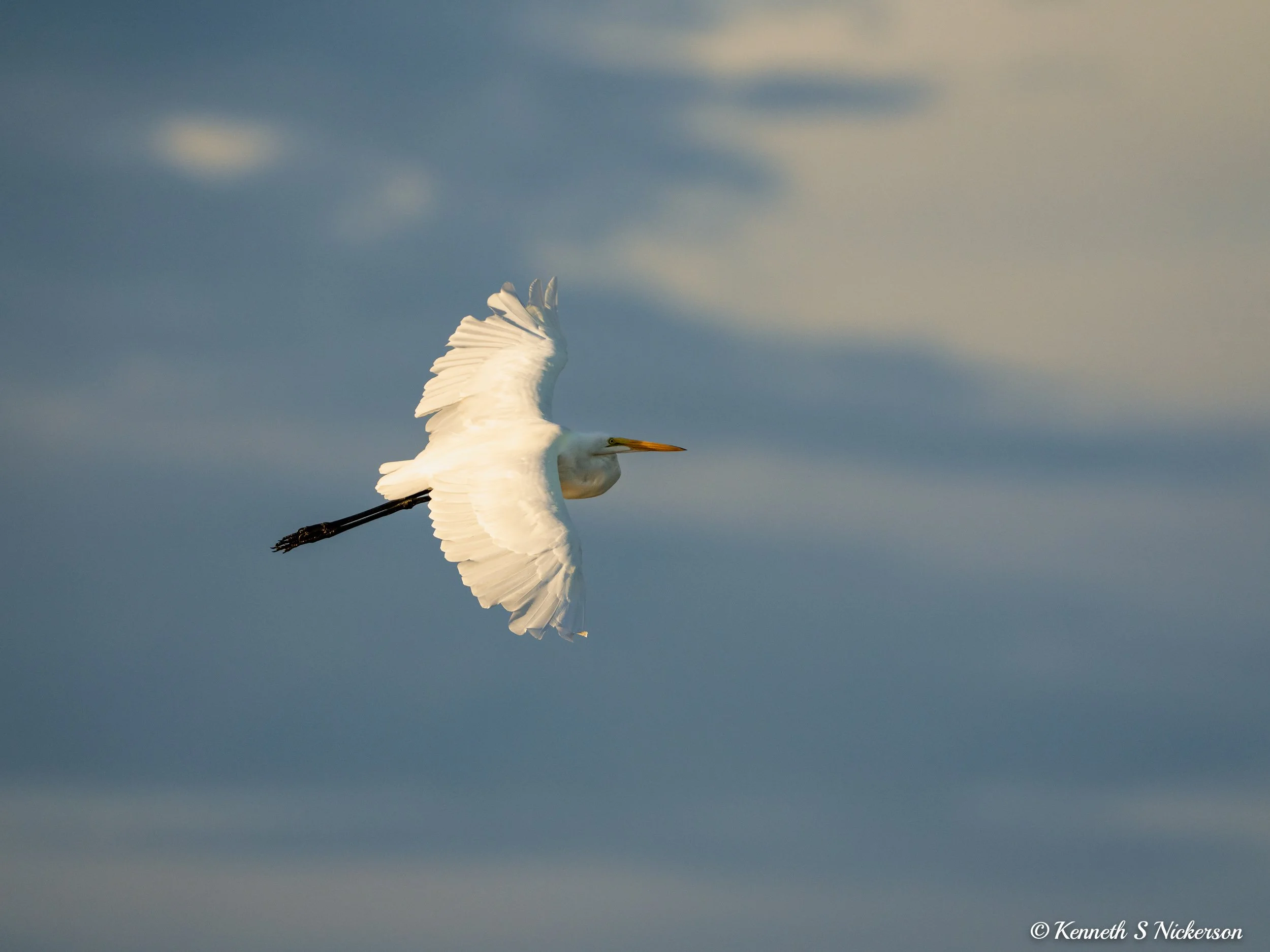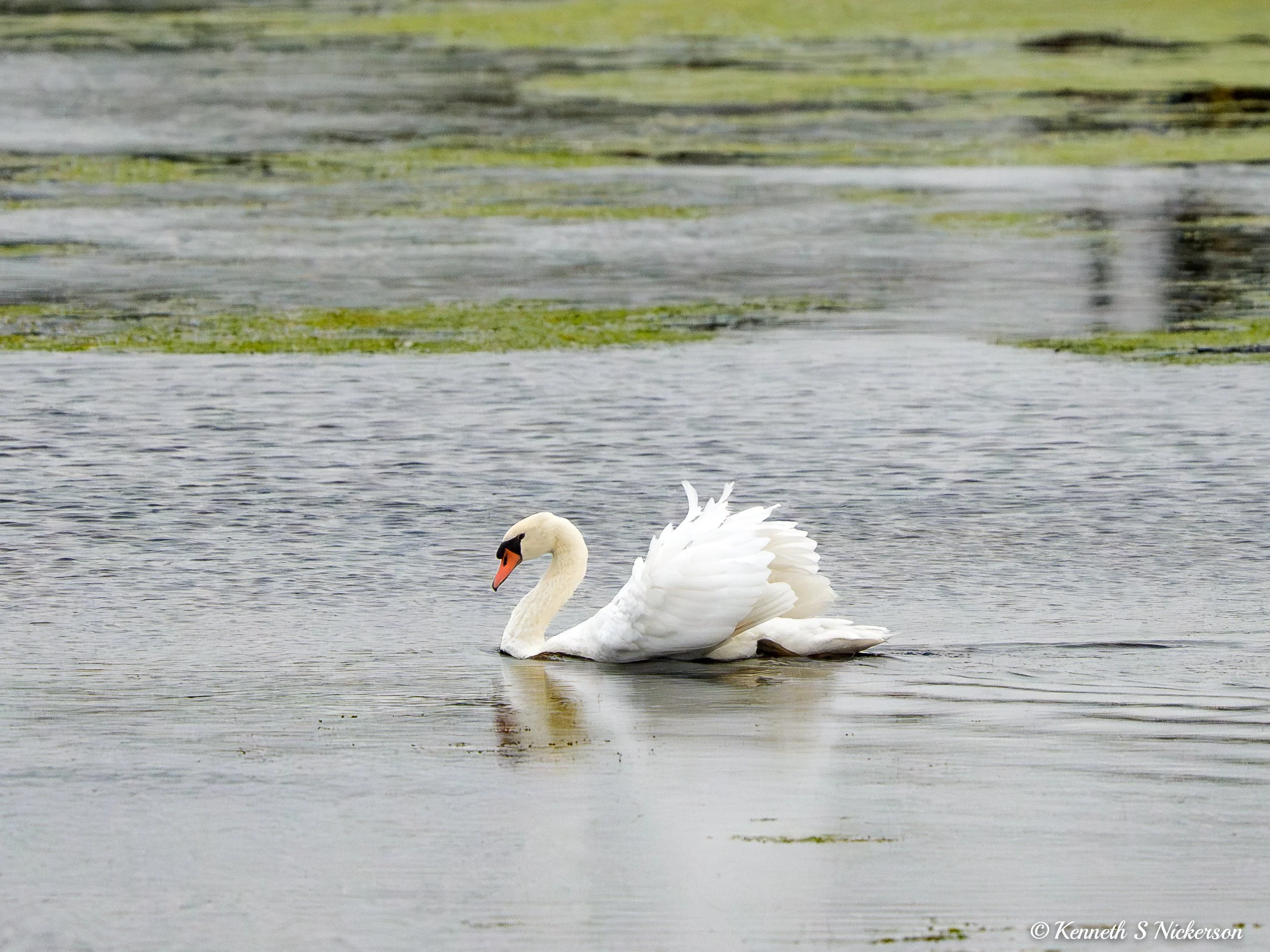Birding in Cape May
I arrived in Cape May NJ late afternoon on Monday October 6. After checking into my hotel, I wandered down the beach into Cape May Point State Park. This is a photo of the Cape May Lighthouse. While I saw a very small number of birds, I did not get any worthwhile photos.
However, the sunset was lovely. I took this photo about 40 minutes after sunset when it was really quite dark. Looking at this photo, its texture reminds me of a painting.
On Tuesday morning, the sun had not yet risen and the moon was still up when I got to the breakwater at Higbee Beach across from the ferry terminal. I was surprised not to see any birds around. Cape May is a famous birding spot during fall migration, yet here I was struggling to find virtually any birds.
I moved to an observation tower in the Higbee Beach Wildlife Management Area. I could look out at and above the treetops in all directions as well as down into the bushes at the edge of the small clearing holding the tower. I spent 60 minutes there and was dismayed by how few birds I saw.
As the sun rose, I saw a single Northern Flicker fly overhead. In the distance over the water, I saw an American Herring Gull, a Ring-billed Gull, 3 Laughing Gulls, a Great Egret, and an Osprey. In the trees, I saw 3 American Crows, a male and female Norther Cardinal, a Gray Catbird, and a Carolina Chickadee. I also saw 2 warblers, a Common Yellowthroat in a bush and a Black-throated Green Warbler flying overhead. These 17 birds were all of the birds I saw over the hour, and most of them were a long way off.
Next, I headed to the Hawk Watch platform by the Cape May Lighthouse that I had visited the previous night. Every day from September 1st through November 30th, there is a bird counter on the platform making a daily tally of the migrating birds with a particular focus on raptors. This work of the Cape May Bird Observatory is supported by New Jersey Audubon and by HawkWatch International. Just as I arrived, a flock of about 25 migrating White Ibis flew overhead. The darker bird below is a juvenile White Ibis.
In addition, to the official bird counter, there were two naturalists present when I arrived. They were there to point out the migrating birds and to answer questions. One of my first questions was why there were so few birds. They explained that the number of birds depended entirely on the wind direction. That day and for the past few days, the wind had been fairly string from the South and had been from the East before that. The East wind had pushed birds inland, and the South wind kept new birds from showing up. Cape May’s reputation for incredible fall migrations comes from days when the wind is from the Northwest. Then, the migrating birds are pushed by the wind along the peninsula and are funneled to Cape May. Unfortunately, the days that I happened to be in Cape May simply had very bad winds for migrating birds. With the lack of birds, the naturalists did what they could such as pointing out this Black Racer as it moved across the grass.
My top flight photo from the morning was capturing this migrating Monarch Butterfly as it flew by.
The naturalists also pointed out this Red Saddlebags Dragonfly.
Over the course of the day, I eventually ended up seeing a reasonable collection of raptors; however, most of them were quite distant. For example, I saw several Sharp-shinned Hawks, Peregrine Falcons, and a Northern Harrier during the morning, but none were close enough for good photos. Almost 4 hours after I first arrived, this Bald Eagle became the first raptor close enough for a reasonable photo.
Only 20 minutes later, this Cooper’s Hawk flew near.
And 25 minutes after that, this American Kestrel made an appearance. At this point, it was after 1pm. My 6:30 AM coffee and muffin was a distant memory, so I headed to a nearby convenience store to get a sandwich and a soda.
Just as I returned, I saw this Peregrine Falcon chasing and harassing an Osprey. The one raptor I was really hoping to see and photograph was a Merlin since I have not seen one this year. While other people saw them during my stay, I never managed to be in the right place at the right time.
The Hawk Watch platform overlooks a pond. For about 3 hours, there was a Great Blue Heron just standing in the shallows barely moving. Suddenly, the heron struck and its patience was rewarded with dinner. Shortly after eating its catch, it flew off.
A Great Egret flew by as the sun was setting. On that note, I headed back to my hotel.
It was raining Wednesday morning when I woke up. I briefly dropped by the Hawk Watch platform, but all I saw were some Mute Swans, Mallards, and American Black Ducks in the pond.
Next, I headed over to the ferry terminal so that I could take the ferry from Cape May NJ to Lewes DE. From the deck of the ferry before we left, I saw this set of Laughing Gulls making a ruckus. I find the expressions of the birds rather humorous.
I did the next leg of this birding trip on my bicycle, making Delaware the 41st state that I have bicycled in. I hope to complete a post about my Delaware birding tomorrow or Tuesday.

















